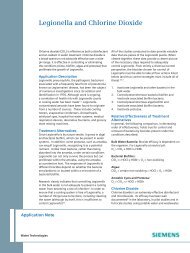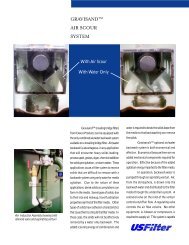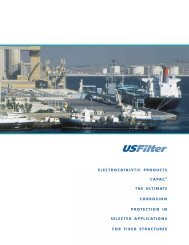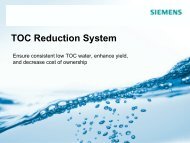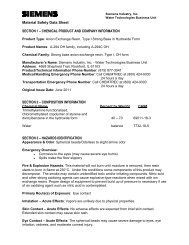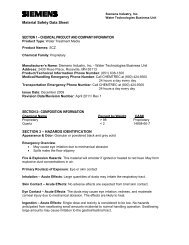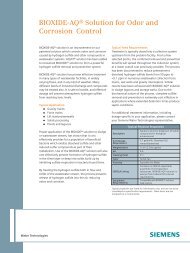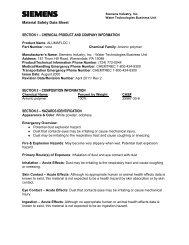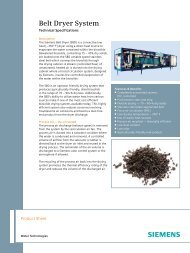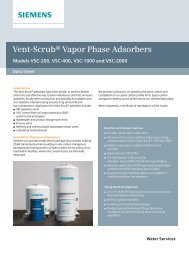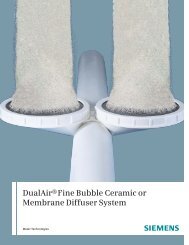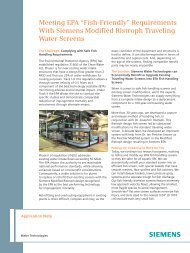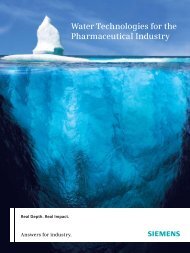Ion Exchange Resin SM-52.pdf - Siemens Water Technologies
Ion Exchange Resin SM-52.pdf - Siemens Water Technologies
Ion Exchange Resin SM-52.pdf - Siemens Water Technologies
Create successful ePaper yourself
Turn your PDF publications into a flip-book with our unique Google optimized e-Paper software.
Material Safety Data Sheet<strong>Siemens</strong> Industry, Inc.<strong>Water</strong> <strong>Technologies</strong> Business UnitDecomposition: Hazardous decomposition products depend upon temperature, air supply,and the presence of other materials. Hazardous decomposition products may include and arenot limited to: aromatic compounds, hydrocarbons, organic sulfonates, sulfur oxides.Conditions to Avoid: <strong>Resin</strong> can decompose at temperatures greater than 90°C (194°F). Donot pack column with dry ion exchange resins. Dry beads expand when wet. This expansioncan cause a glass column to shatter.SECTION 11 – TOXICOLOGICAL INFORMATIONInhalation – Acute: Vapors are unlikely due to physical properties.Inhalation – Chronic: There are no known chronic inhalation effects.Skin Contact – Acute: Prolonged or repeated exposure is not likely to cause significant skinirritation. May cause more severe response if skin is scratched or cut. Skin absorption isunlikely due to physical properties.Skin Contact – Chronic: There are no known chronic dermal effects.Eye Contact – Acute: May cause severe eye irritation. May cause moderate corneal injury.Effects are likely to heal.Ingestion – Acute: Single dose oral toxicity is considered to be low. No hazards anticipatedfrom swallowing small amounts incidental to normal handling operation.Ingestion – Chronic: There are no known chronic ingestion effects.Carcinogenicity/Mutagenicity: There are no known carcinogenic/mutagenic effects.Reproductive Effects: There are no known reproductive effects.Neurotoxicity: There are no known neurotoxic effects.Other Effects: There are no other known toxic effects.Target Organs: This product will affect the eyes.SECTION 12 – ECOLOGICAL INFORMATIONThe environmental fate and ecological toxicity are not known.SECTION 13 – DISPOSAL CONSIDERATIONSSpill/Leak Procedures: Isolate spill area to prevent falls as material can be a slipping hazard.Avoid contact with eyes and skin. Material is heavier than water and has limited water solubility.It will collect on the lowest surface.Cleanup: Clean up floor area. Sweep up.Regulatory Requirements: Follow all applicable Federal, State, Local, or Provincial regulations.Page 5 of 6



